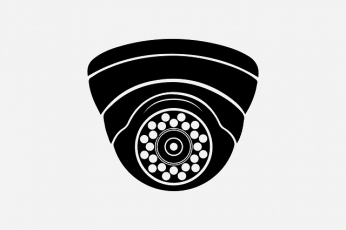
Commercial trucking companies are testing in-cab driver monitoring systems to detect fatigued and distracted driving behaviors behind the wheel.
In-Cab Monitoring Systems for Truckers
In-cab monitoring systems in commercial trucks are expected to reduce drowsy and distracted accidents for truckers. Advancements in technology have created sophisticated in-cab truck monitoring systems that view a driver’s head and eye movements behind the wheel to detect signs of fatigue, drowsiness, and other distractions that may cause a serious crash.
Guardian System
The Guardian monitoring system developed by Seeing Machines is currently undergoing testing by Bison Transport, a Canadian transportation company with a number of commercial fleets. To test efficiency and safety, Bison first installed the Guardian monitoring system in 15 trucks about 18 months ago. Since then, the system has been added to another 120 trucks. For the first six weeks, visual monitoring was activated without in-cab audio and vibration alerts. For the next six weeks, audio and vibration alerts were activated. Following the 12-week monitoring period, Bison documented driver reports that showed a 97% reduction in cell phone use, a 67% reduction in drowsy driving, and a 40% reduction in distracted driving, numbers much lower than averages seen by truck accident lawyers
The Guardian monitoring system uses computer vision algorithms to assess a driver’s visual attention to the road and their environment. By monitoring head and eye movements of drivers, in-cab sensors capture levels of fatigue and drowsy driving that put drivers at risk for accidents. If a problem is detected, a series of audible and vibration alerts are sent to the driver in real-time. In addition, a video file is sent to Guardian’s 24/7 monitoring center where staff members notify fleet managers by text, email, or telephone. The Guardian system allows fleet managers to examine flagged video clips through a live portal at any time, but video is only recorded when the system detects a problem.
Driveri System
The Driveri system developed by Netradyne uses object-detection sensors to identify distracted driving behaviors in commercial truckers. The system measures the vertical and horizontal position of a driver’s head position in relation to body movements. When distracted driving is suspected, the system notifies both the driver and fleet manager in real-time. Immediate audio alerts are sent directly to the driver and fleet manager who can contact the driver through the Driveri mobile app. The app provides a fast, easy way for fleet managers to recognize a problem and intervene with drivers before an accident occurs.
In addition to detecting distracted driving behaviors, Driveri’s vision-based technology analyzes yawning and gaze patterns to identify potential fatigue or drowsiness. Instead of selecting certain times of the day to monitor fatigue, the Driveri system captures and analyzes images every minute of the day or night a driver is on the road.
Lytx DriveCam
The Lytx DriveCam captures images of real drive-time for commercial truckers. The California-based technology company designs, manufactures, and sells video telematics products that help transportation companies improve driver safety, promote business productivity, and comply with the Department of Transportation federal regulations.
Lytx DriveCams are mounted near the top center of the truck’s windshield. With lenses that face outward to the road as well as inward to the truck, the DriveCam captures video images with 360-degree views, night vision, and audio sounds. The DriveCam displays a solid green light on the right side until it’s triggered to record an event. A solid red light indicates that footage has not been sent to the central system for review. Cloud-connected dash cameras by Lytx deliver clear video clips to an online dashboard where fleet managers can find clips within minutes.
Trucking Safety
According to the Federal Motor Carrier Safety Administration, there were 4,657 U.S. fatal trucking accidents involving large commercial trucks and semi tractor-trailers in 2017. Accident records show that at least 60 truckers identified at crash scenes were driving while drowsy, sleep-deprived, or distracted.
Current federal regulations do not allow commercial truckers to drive more than 11 continuous hours without taking mandated rest and sleep breaks. Federal regulations limit drive-time for long-haul truckers to 11 hours of drive-time within each 14-hour workday on the road. Truckers must be off-duty for at least 10 consecutive hours before they can start another on-duty shift. Drivers on the road for more than 8 hours are required to take one 30-minute break before their 8-hour shift ends.
The Trump administration wants to relax federal regulations for commercial truckers, but safety advocates are concerned about increased accidents seen by truck accident lawyers if regulations are changed. Fatigue and distracted driving are serious problems within the trucking industry. Trucking companies and safety officials warn that more flexibility in drive-time hours may increase dangers on the road for truckers as well as other motorists.









